Here you will be able to see how effective every algorithm it was, all the corrct and uncorrect algorithms, and you can also make a comparison between all the algorithms applied to the images using Weka.
BayesNet: BAYESNET is capable of learning the probability density functions (PDFs) of individual pattern classes from a collection of learning samples, and designed for pattern classification based on the Bayesian decision rule. It is a type of probabilistic graphical model of data that uses Bayesian inference for probability computations
-Percentages

-ConfussionMatrix

NaiveBayes: In statistics theory and data mining, a Naive Bays classifier is a probabilistic classifier based on Bayes theorem and some additional simplifications, which are usually summarizedin the hypothesis of independence between the predictor varaibles, that it is called naive, that is ingenious. The percentage of correct classification of the images is neither very high nor very low, compared to other previously appeared percentages, but it must be said that the Naive Bayes estimates can be erroneous in some cases, so we should not take it very seriously their probability output
-Percentages
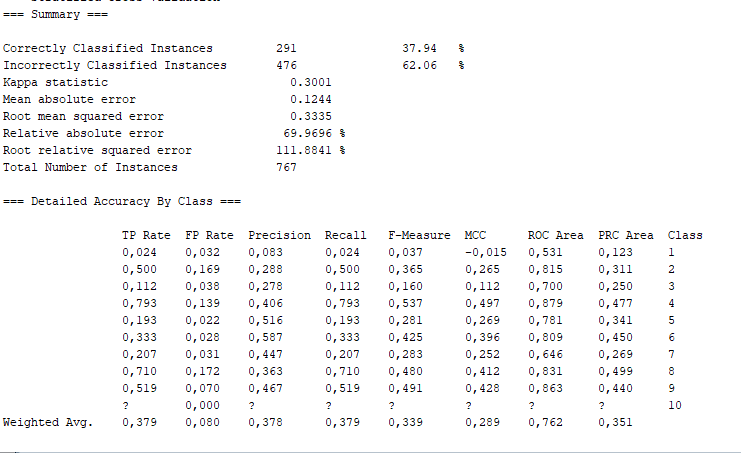
-ConfussionMatrix
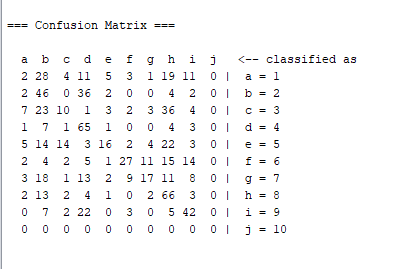
RandomTree: It is a tree-based classification and prediction method. In this method, the node starts by examining the input fields avaiable to it to find the best split. Probably, the not-high percentage of correct classification of the images is due to the fact this method is limited by the fact that it is only divided into two subgroups and so on, the fact that the combination can only be binary could be the explanation that this algorithm obtains a percentage of correct classification that is not very low but not very high either, it can be limited by this fact.
-Percentages

-ConfussionMatrix

RandomForest: Random forest is a Supervised Machine Learning Algorithm that is used widely in Classification and Regression problems. It builds decision trees on different samples and takes their majority vote for classification and average in case of regression.
-Percentages
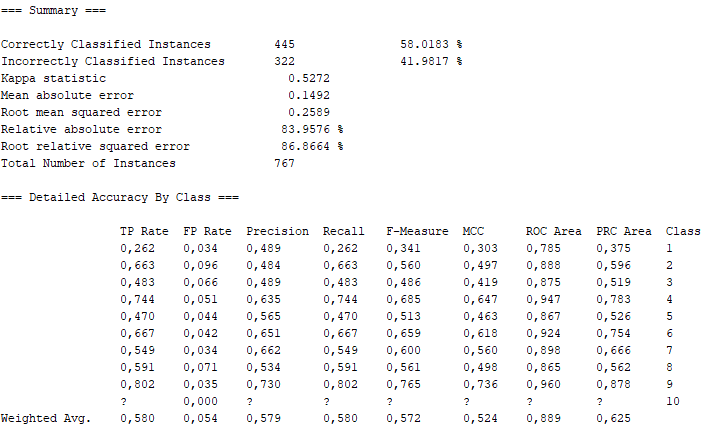
-ConfussionMatrix

NaiveBayesUpdateable:
-Percentages
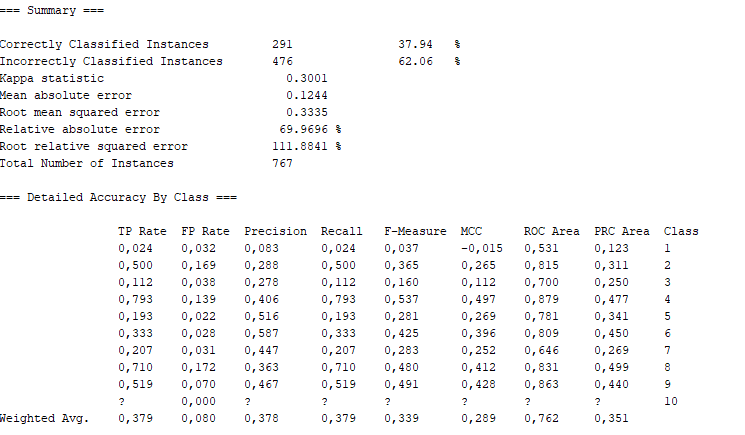
-ConfussionMatrix

J48: J48 is a machine learning decision tree classification algorithm based on Iterative Dichotomiser 3. It is very helpful in examine the data categorically and continuously.
-Percentages

-ConfussionMatrix

REPTree: As it happens in RandomTree, is a method to generate a decision tree from a data. This method is simple but often it can be considered too agressive when it is building the knot system, as this could eliminate important data trees. This very aggressive method of possible elimination of important trees when classifying the data may be one of the reasons why the percentatge of correct classification of the images in the project is so low using said algorithm.
-Percentages

-ConfussionMatrix
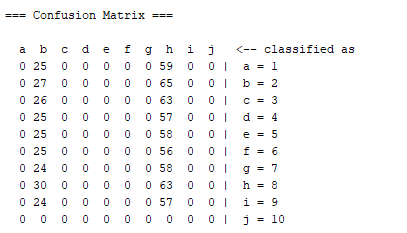
SMO: Sequential minimal optimization (SMO) is an algorithm for solving the quadratic programming (QP) problem that arises during the training of support-vector machines (SVM). It was invented by John Platt in 1998 at Microsoft Research.
-Percentages

-ConfussionMatrix
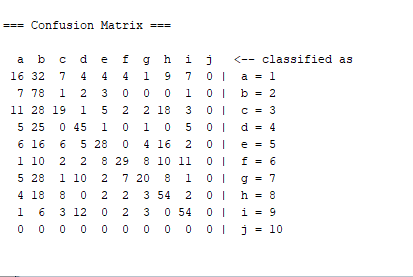
IBk: K-nearest neighbours classifier. Can select appropriate value of K based on cross-validation. Can also do distance weighting.
-Percentages
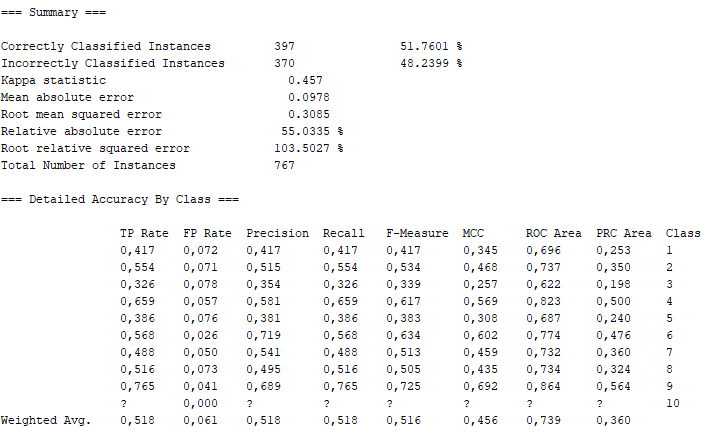
-ConfussionMatrix

ZeroR: iT is the simplest classification method odf data which relies on the target and ignores all predictors. ZeroR classifier simply predicts the majority category. Although there is no predictability power in ZeroR, it is useful for determining a baseline performance as a benchmark for other classification methods. Construct a frequency table and select its most frequent value. The fact that it is one of the simplest classification methods may be the reason why the percentage of correct classification is so low. A simplification of the knot method can lead to these results.
-Percentages

-ConfussionMatrix
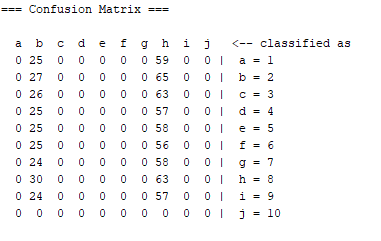
So just to sum up, almost every algorithm has a percentatge of correct classified instances between 40-50%, but there are some exeptions: the worst correctly classified are both ZeroR and REPtree, with a correct percentage of 11%, and the one that has worked the best is the RandomForest, with a 58% of correcct rate.